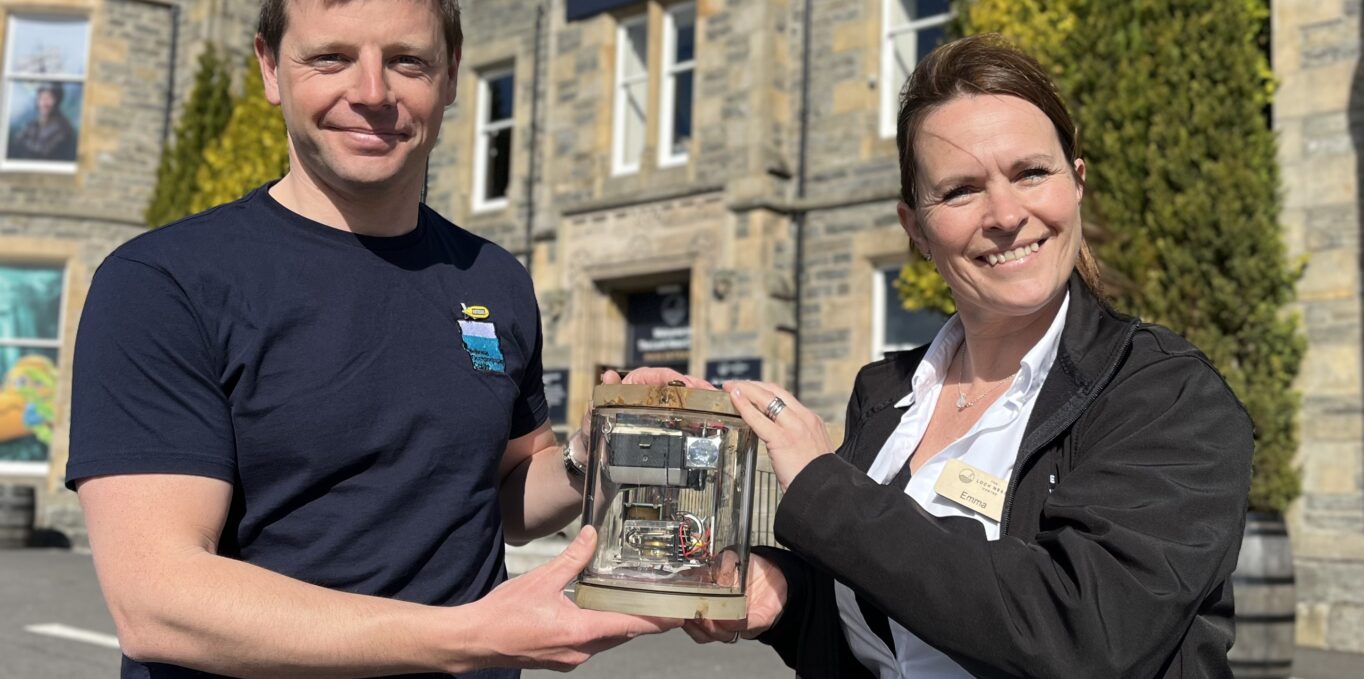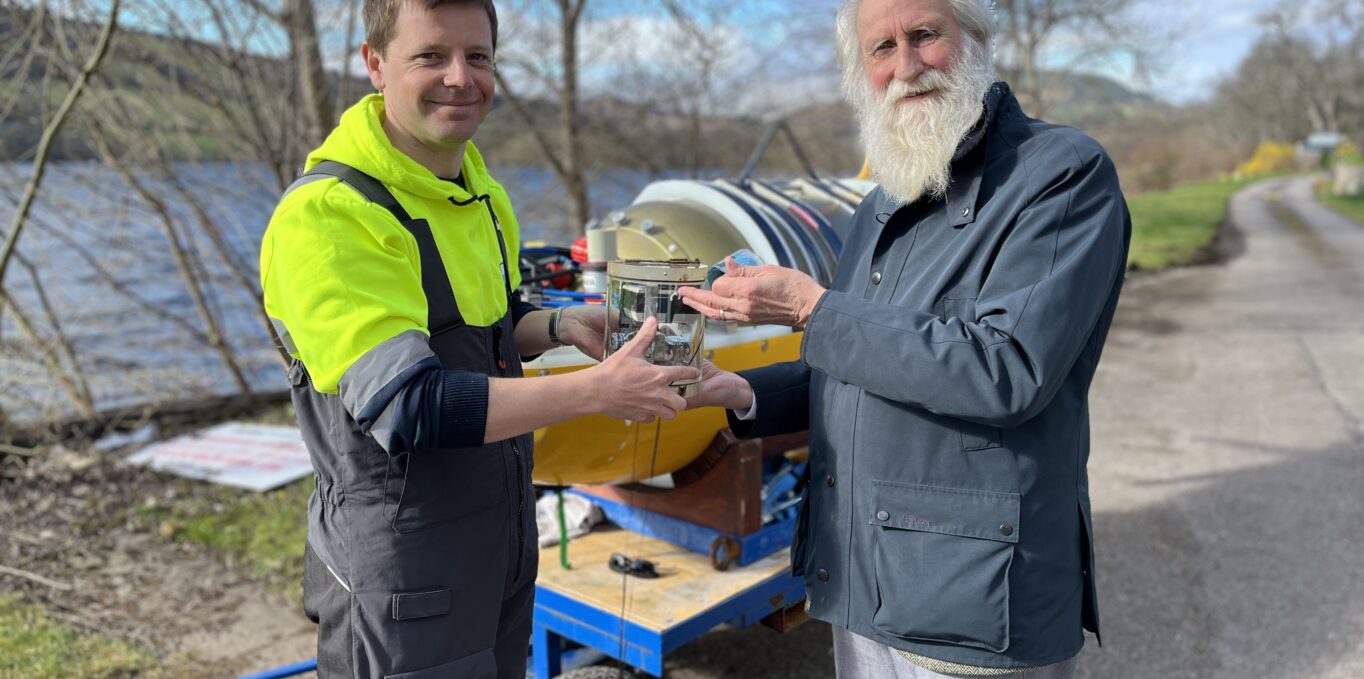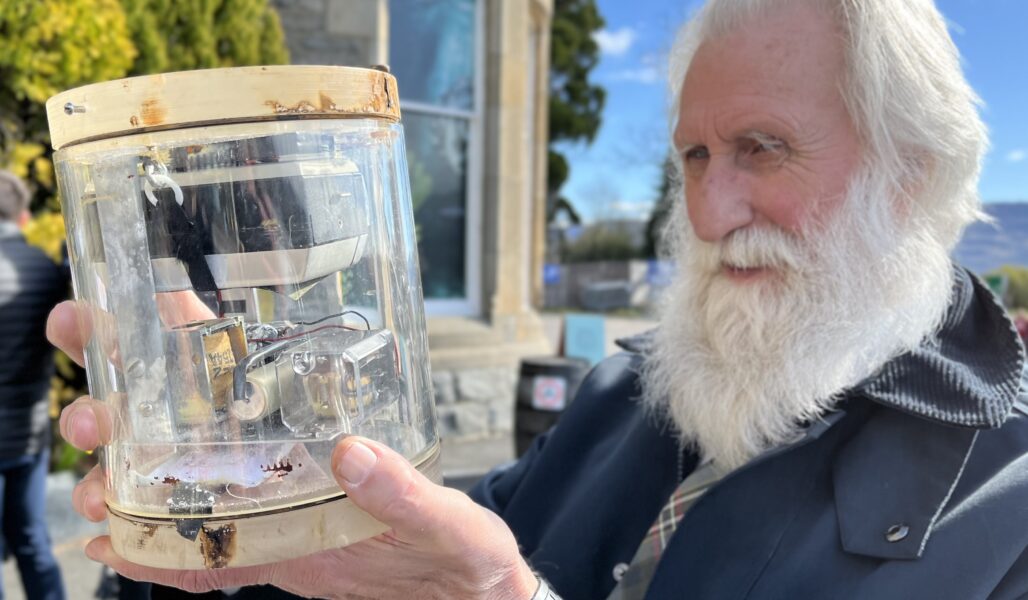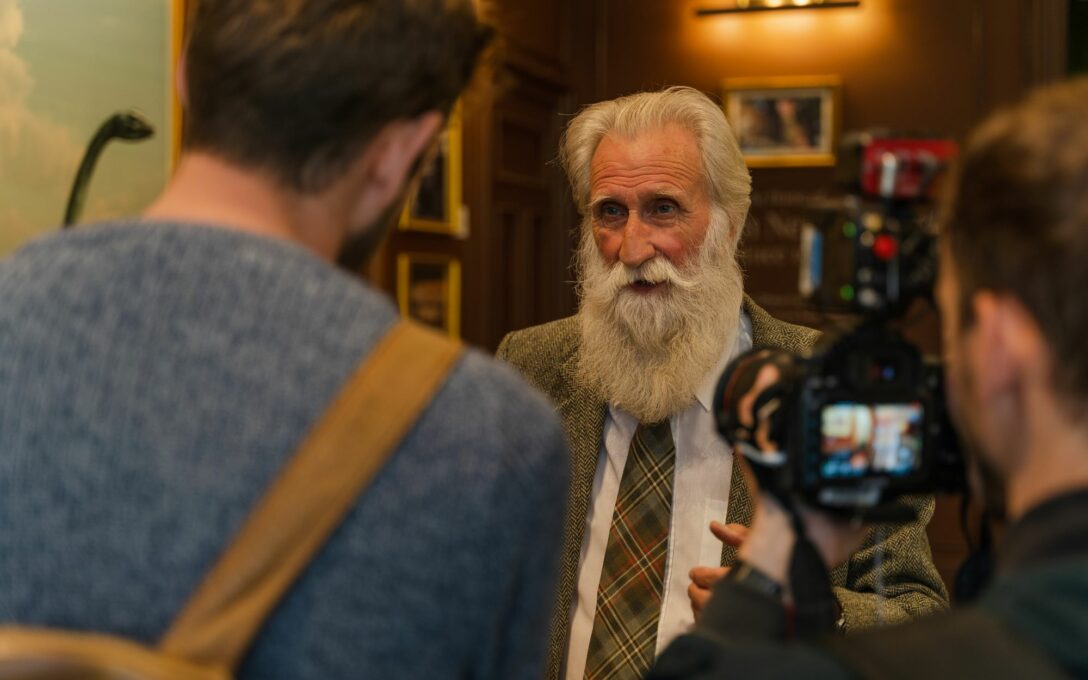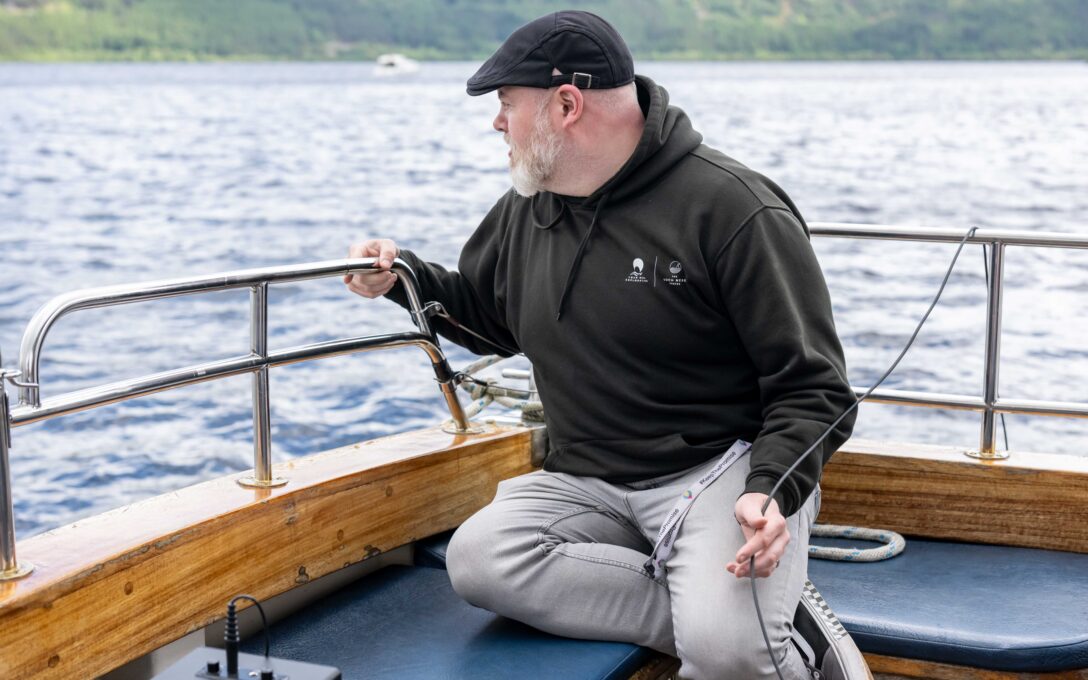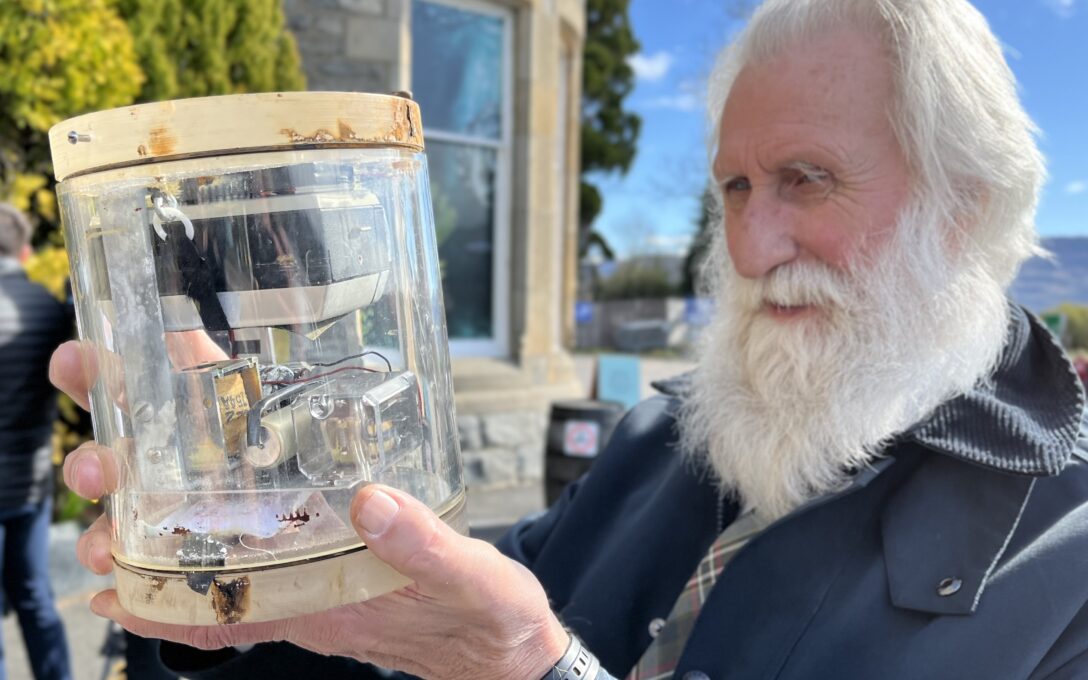The use of clockwork cameras meant that the internal battery and relay system was only required to press the shutter button rather than having to wind the camera on for the next exposure. The square flash cube had a small flash bulb on each side and rotated automatically between exposures to allow four pictures to be taken in the darkness during each deployment. To prevent photos being taken accidentally whilst launching, the triggers were temporarily deactivated by soluble Polo mints, a matter that caused some amusement at the time!
A late summer gale destroyed the mooring systems of three of the cameras, and they were lost. The discovery of one of the cameras on the loch bed over a hundred meters deep proved the quality of the camera housing, which had resisted the water pressure for half a century and was dry inside. Photos had been taken, sadly with no Loch Ness Monster, probably due to wave action during the gale.
The camera also provides an opportunity to comment upon some tactics in combating the notoriously peaty brown waters of the loch. Both Roy Mackal’s cameras and those of the later Loch Ness Project were deployed pointing upwards, but for opposite reasons. Roy Mackal’s cameras were taking advantage of countershading in aquatic creatures, whereby they are usually colored dark on their upper surfaces and lighter underneath. Thus, a predator or prey looking down would be less likely to see the creature against the dark of the depths. If looking upwards from below, the contrast of a creature’s silhouette against the daylight would be reduced. So Mackal’s deepwater cameras, with their flash cubes firing upwards, were intended to illuminate the white underside of any creature against the blackness. By contrast, the Loch Ness Project cameras and submersible operated in shallower water and pointed upwards to catch a large creature’s silhouette, lit by the extensive circle of daylight behind it.

